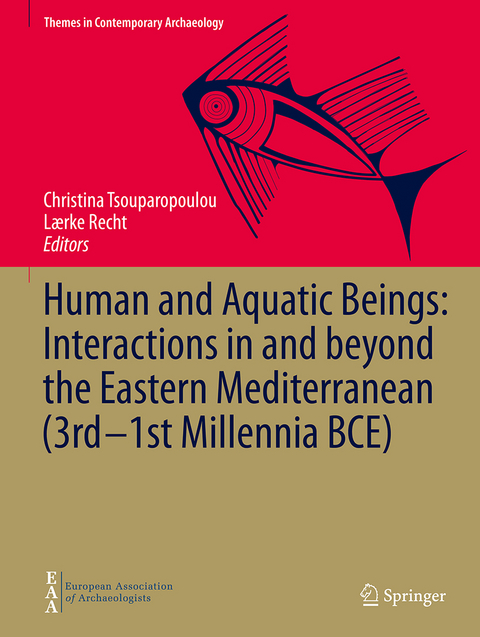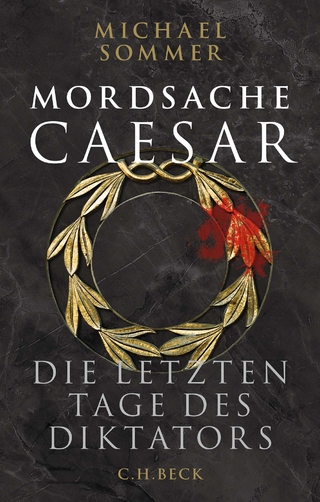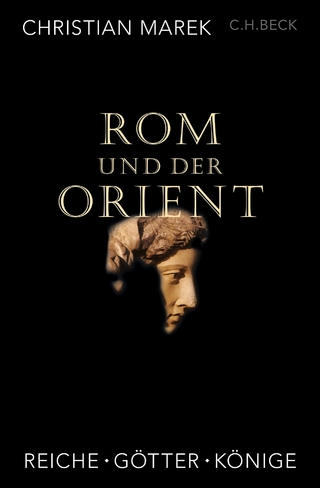
Human and Aquatic Beings: Interactions in and beyond the Eastern Mediterranean (3rd—1st Millennia BCE)
Springer International Publishing (Verlag)
978-3-031-73642-1 (ISBN)
- Noch nicht erschienen - erscheint am 03.02.2025
- Versandkostenfrei
- Auch auf Rechnung
- Artikel merken
This volume examines the role of fish and molluscs in everyday life as well as in terms of their impact on social structures, and as part of ideological and symbolic expression. Given the prevalence of anddependence on water in various forms in all regions of the Eastern Mediterranean, Egypt and Western Asia, it is no wonder that fish and other aquatic species made an impact on human lives. Yet this topic remains rather understudied. Until recently, ongoing projects in marine and freshwater species and their interaction with humans and the environment either focus on the European marine ecosystem or on themes other than the social interactions of humans and aquatic species.
The chapters in this volume explore questions related to fishing practices and technologies, social status, human-fish/mollusc relations (including potential over-exploitation), and fish/molluscs in ritual practices (e.g. as temple offerings, festival consumption, burial offerings), and ideology and religion (e.g. associated with supernatural beings or sacred space, as hybrid creatures, and as represented in luxury goods). The volume also examines aquatic species as a nonalimentary resource, for example as jewellery, inlays, dyeing and medicinal purposes. The material under investigation includes faunal remains (worked and unworked), fishing gear and related tools, iconography and written sources. Many chapters also integrate multiple lines of evidence, ranging from stylistic, contextual and iconographic analyses to zooarchaeological investigations. This volume is relevant to archaeologists, zooarchaeologists, biologists and anyone interested in human-animal relations and/or the archaeology of the early Eastern Mediterranean and surrounding regions.
Christina Tsouparopoulou, Assistant Professor in Mesopotamian Archaeology, Institute of Archaeology, UKSW Warsaw and Honorary Fellow, Department of Archaeology, Durham University. Main research interests: Bronze Age Mesopotamia and Eastern Mediterranean, religion, popular material culture, text and object, human-animal relations, digital humanities. Lærke Recht, Professor of Early Eastern Mediterranean Archaeology, Department of Ancient Eastern Mediterranean Studies, Institute of Classics, University of Graz and International Institute for Mesopotamian Area Studies Research Fellow; Main research interests: Bronze Age Aegean, Cyprus and Near East, human-animal relations, iconography, religion, digital archaeology.
Chapter 1. Creatures of the water and their impact on human lives (Recht and Tsouparopoulou).- Chapter 2. Isotopes and fish bones in the Bronze Age Aegean: Expanding our understanding of aquatic diets (Mylona and Allshouse).- Chapter 3. Fishing gear and fish remains from Vergina: A case of inland fishing in Macedonia (Stamatopoulou).- Chapter 4. The marine aspect of the Temple Repositories in the Palace of Knossos (Eleftheriou, et al).- Chapter 5. " pi ni ni th ni ": Marine creatures in Aegean and Cypriot pictorial pottery at the end of the Late Bronze Age (Lekka).- Chapter 6. Underrepresented riches from the sea (Yamasaki).- Chapter 7. Exploring fishing in Cyprus from the Neolithic to the Early Christian periods (Michael).- Chapter 8. Cockles and carps: Human-aquatic being relations in the mid to late third millennium BCE tombs of Ur (Recht and Tsouparopoulou).- Chapter 9. Clamour from the Mediterranean to the Persian Gulf: Revised dating and distribution patterns of engraved Tridacna squamosa (Schlegel).- Chapter 10. Correlations between stones and iconography: Fish-cloaked figures in ancient Mesopotamia (Ftaimi).- Chapter 11. Shells in jewellery from Middle Kingdom Egypt (Patrevita).- Chapter 12. Shell discs from first millennium BCE Iran (Naseri et al).- Chapter 13. Concluding remarks: Creatures of the water (Greenfield).
| Erscheint lt. Verlag | 3.2.2025 |
|---|---|
| Reihe/Serie | Themes in Contemporary Archaeology |
| Zusatzinfo | XXI, 152 p. 79 illus., 66 illus. in color. |
| Verlagsort | Cham |
| Sprache | englisch |
| Maße | 210 x 279 mm |
| Themenwelt | Kunst / Musik / Theater ► Kunstgeschichte / Kunststile |
| Geisteswissenschaften ► Archäologie | |
| Geschichte ► Allgemeine Geschichte ► Altertum / Antike | |
| Naturwissenschaften ► Biologie ► Ökologie / Naturschutz | |
| Schlagworte | Dating patterns engraved tridacna squamosa molluscs • Early Dynastic III Ur • Fish figures on Neo-Assyrian Neo-Babylonian seals • human-animal relations • Isotopes and fish bones Eastern Mediterranean • Marine animals impact on human lives • Marine creatures on Aegean Cypriot pictorial pottery • Marine environment archaeology • Marine Invertebrate Exploitation • Marine Temple Repositories Palace of Knossos • Maritime exploitation utilization early Prehistoric Cyprus • Multi-dimensional synthesis of fishing activity • Shell disks from first millennium BC Iran • Shells in Middle Kingdom Egypt • Stones and iconography marine • Zooarchaeologists marine archaeology |
| ISBN-10 | 3-031-73642-7 / 3031736427 |
| ISBN-13 | 978-3-031-73642-1 / 9783031736421 |
| Zustand | Neuware |
| Informationen gemäß Produktsicherheitsverordnung (GPSR) | |
| Haben Sie eine Frage zum Produkt? |
aus dem Bereich


